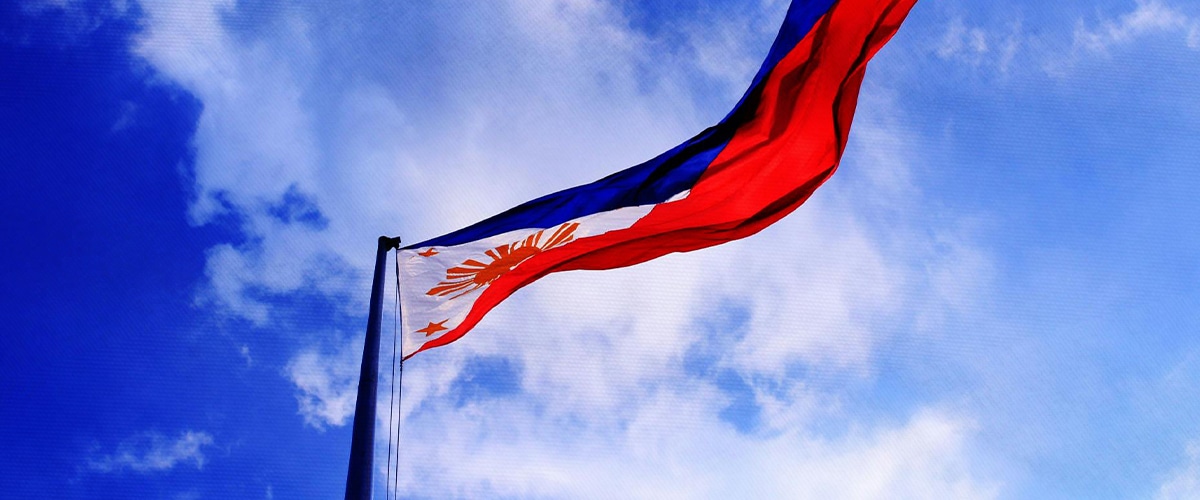TOMORROW, July 22nd, President Ferdinand “Bongbong” Marcos Junior will be declaring his third State of the Nation Address (SONA.)
Marcos began his presidency in June of 2022, enacting several changes and making promises to the country’s citizens throughout this.
Part of his 8-point socio-economic agenda is that of ensuring proper healthcare for every Filipino.
In the healthcare sector
In his previous SONA, President Marcos stated his desire to push for family-based health insurance, which would allow all Filipinos to have access to basic health care services, as per the Philippine News Agency.
Marcos vowed to expand the medical and nursing education programs within the country, recognizing that there is a shortage of healthcare workers in the Philippines at present.
This is part of his goal to achieve universal healthcare.
“We are helping nursing graduates hurdle their board exams so that they will obtain their licenses and join our pool of healthcare professionals,” he had said.
He promised that within every barangay and / or clustered village, there would be a rural health unit (RHU) which would have a clinic and would be visited by doctors, nurses, and midwives at least thrice a week.
He also stated that the Department of Health (DOH) would establish hospitals, health centers, and medical services accessible to those living in rural communities through the launch of the “Libreng Laboratoryo, Konsulta, at Gamot Para sa Lahat,” otherwise known as the LAB for ALL caravan.
As per the website of the president, this initiative would provide people the free laboratory services, x-rays, consultations, and medicines. It was launched in several different places in the Philippines such as Baguio City, Batangas, Bulacan, Tarlac, Laguna, Pampanga, and Zambales.
In Central Luzon, he launched the Catheterization Laboratory (CathLab), which would help those requiring interventional cardiac and non-cardiac procedures with the use of interventional radiology. This was established in the Jose B. Lingad Memorial General Hospital located in San Fernando Pampanga.
He also collaborated with the DOH in the construction of the Clark Multi-Specialty Medical Center, which began construction this July. This center is set to provide medical care through its heart, kidney, cancer, and pediatric centers.
Other specialty hospitals – such as the Philippine Heart Center Annex in the Clark Freeport Zone and the Cancer Institute and Oxygen Generating Plant of Cotabato Regional and Medical Center – have also been inaugurated and will be opening soon.
Aside from this, according to the Philippine Council for Health Research and Development, Marcos also vowed to push for the establishment of the Virology and Vaccine Institute of the Philippines (VIP) as well as the Center for Disease Control (CDC) back in August of 2022.
Perhaps the most crucial of these promises, however, is the full implementation of Republic Act No. 11223 or the Universal Healthcare Act law.
In social services
At the start of the year, the PBBM administration stated that the Department of Social Welfare and Development (DSWD) would assume an expanded role during Marcos’s time as president, given that people needed more social support and assistance.
He told lawmakers to provide more resources for the department, with Congress making the Abot Kamay Ang Pagtulong (AKAP) program’s budget of PHP 27 billion to help small laborers deal with the rising prices of their necessities.
The DSWD’s budget was also increased to PHP 245 billion, which was in turn used for programs such as the Pantawid Pamilyang Pilipino Program, Senior Pension, and the like. The food catering operation of the DSWD, which provided millions of hot meals to preschool children within different communities, was given a budget of PHP 4.01 billion.
Marcos also launched the Disaster Response Command Center, which would help the DSWD with proper disaster response and relief operations during calamities happening within the country.
In April of last year, Marcos also approved the Social Protection Floor (SPF) recommendation, which would institutionalize development programs of the government as a means of providing aid for the most vulnerable within the country.
Included in this was a nationally defined set of basic social security guarantees that would help to either prevent or alleviate vulnerability from poverty as well as exclusion from society. It would help the less fortunate to get access to things like essential healthcare and basic social services.
Marcos also created the Buong Bansa Mapayapa program, which the PNA explains would help to formalize the convergence of efforts for inclusive, sustainable peace and development in areas of the office that are vulnerable and affected heavily by conflicts.
Last year, Marcos also signed the “Caregiver Welfare Act,” which the PCO explains aims to protect the rights and welfare of domestic caregivers, safeguarding them from abuse and exploitation. It also ensures their rights toward decent employment, income, and living.
In 2024, the Department of Budget and Management allotted PHP 19.97 billion for the Protective Services for Individuals and Families in Difficult Circumstances (PSIFDC) program, which would provide financial assistance to 3.9 million struggling Filipinos within the country.
These are only a few of the programs Marcos has implemented – and plans to implement – for the country’s healthcare and social service systems as of 2024.
Cost of medicines
On his website, President Marcos states that one of his priorities is affordable healthcare via lowering the cost of medicine and allowing for easier importation to strengthen healthcare within underserved communities.
In the past, Marcos also pleaded with the likes of the DSWD to treat Pinoys with compassion and kindness.
For 63-year-old public teacher Edelwisa R. Puri, the current state of the Philippines’ healthcare system is “dismal.” She also asserted that public hospitals are insufficient since no health centers or hospitals are available in far-flung barrios and other areas.
Puri, who also became a patient, recalled her traumatic experience in 2022: “I was rushed [to] an emergency ward when I had profuse bleeding on my way to my work.”
“Bleeding, starving, and waiting for hours to be attended by a physician only to be informed that their priorities are either the ones in 50-50 survival or those who are about to give birth,” she narrated to Republicasia.
Puri said that she was grateful to have her HMO card and called it her “saving grace.” However, despite her “pain, hunger, frustration and weariness,” she was only regarded as one of the potential patients in the OB-Gyne Emergency Room.
The case is similar to that of 76-year-old Carolina Chan Agbulos, who said that the public’s access to general hospitals is “limited.” She also had unpleasant experiences with public hospitals in the past.
“I brought a friend there to be taken [care] of because he has TB, and it was so cramped for a ward where you have [a] TB patient; because TB is contagious, they’re supposed to be far apart,” said Agbulos.
She added: “I know that [they have] …good doctors, but hindi kalidad.”
The 76-year-old also shared her unpleasant experience at the Ospital ng Sampaloc:
“One, it’s dirty. Two, it’s so cramped, and they don’t have a system to receive patients, and the waiting area is hot. Some medicines are not available, so the poor have to produce money to buy medicines from the drugstore.”
“I brought a patient there, a beggar because he had wounds on his ankle that I wanted the doctor to see him to tell us what’s wrong and the medicine that I needed. The doctor did not come out; it was the nurse who did,” shared Agbulos, who later said that the nurse had not bothered to clean the wound and only told them what they needed to do to help him.
For 21-year-old college student Crissa Mae Ayson, her family can only access two health centers in their area in Cavite: one in Kawit and the other in Noveleta.
Ayson described the health center in Noveleta as smaller than the “newly renovated” Kalayaan Hospital in Kawit. However, despite the renovation, it is still hard to access if you don’t have your own means of transportation or if you don’t call an ambulance.
Ayson then pointed out that public hospitals are not free, contrary to what they should be.
“There are still things to pay for, which is concerning because the [communities] surrounding these hospitals are really poor,” Ayson told Republlicasia.
Just last year, her family had an unpleasant experience in the two hospitals. She said that none of them accepted her grandfather, who needed medical assistance.
“Even the other hospitals near our area, public or private, did not accept him because of the lack of personnel, and necessary equipment are [not] available in the hospitals. He had to go all the way to San Lazaro Hospital in Manila just to get treated,” the college student shared.
Ayson added that despite her grandfather’s troublesome trip, he still had to pay a huge amount for everything, including the ambulance.
On the other hand, 60-year-old street sweeper M* had both positive and negative experiences in the country’s health care services.
According to M, she rushed her grandchild, who was in critical condition, to PGH with only a thousand pesos. Upon arrival, the hospital did not provide oxygen for the patient and even asked them to sign a waiver stating that the hospital would not be held liable for any consequences.
M told her family not to sign and talked to a doctor about prioritizing her grandchild. Fortunately, the doctor accommodated them. Having to cover her grandchild’s hospital bills, M resorted to borrowing money from her former employers.
She also asked from health centers which were no help at all: “[L]alapit ako sa mga center, sabihin nila wala nang gamot i-stock. Nakikita ko na lang nakatapon doon sa kalye, mga expired na ‘yung gamot, tapos kapag hihingi ako, sabihin walang gamot.“
On the bright side, M was grateful that the Malasakit Program helped with their hospital bills when her daughter gave birth.
“Ang ginastos lang namin ‘yung mga binili ko lang na gamot sa labas kasi walang ibang gamot doon sa ospital. Kahit papaano nakaraos din naman,” said M.
Unbenefited beneficiaries
Despite having health insurance, Puri expected that being a public teacher would help with her medical bills, but that was not the case.
“I used my [health card], which is a personal health card. Dapat may ayuda DepEd kaso waley, and Philhealth was also utilized that time,” the public teacher explained.
As for Agbulos, she said that the government quickly deducts from their Philhealth and SSS, but they are uninformed of the computation’s basis. Additionally, despite regularly receiving her pension, the 76-year-old beneficiary has not yet received the additional PHP 1, 000 from SSS.
Meanwhile, college student Ayson emphasized the purpose of paying taxes: “Public hospitals are supposed to be facilities poor people can access. Free [checkups] must also be available for people who can’t afford general [checkups]. Nagbabayad naman tayo ng tax.
Public voice
Puri is hoping that the government will allocate more of its budget to public hospitals and decentralize the social services which are usually concentrated in the urban areas.
“Establish more hospitals, activate the health or puericulture centers, expand free health services, and modernize health facilities in the country, especially public hospitals, [and] upgrade salary of health workers so they will be enticed to serve the country and deter brain drain,” Puri stated.
Ayson also expressed the same sentiment, explicitly adding medicines and checkups to the free health services.
Meanwhile, Agbulos calls for integrity: “Our healthcare system agencies should not be corrupted, because that’s the health of people; ang mga masa sila lang ang talaga nagsu-suffer, not the rich [ones], not the middle classes. It’s the poorest of the poor, and my heart goes out to them.”
* M’s name has been changed for privacy reasons.
With reports from Gella J. Aboratigue
How useful was this post?
Click on a star to rate it!
Average rating 0 / 5. Vote count: 0
No votes so far! Be the first to rate this post.
We are sorry that this post was not useful for you!
Let us improve this post!
Tell us how we can improve this post?







